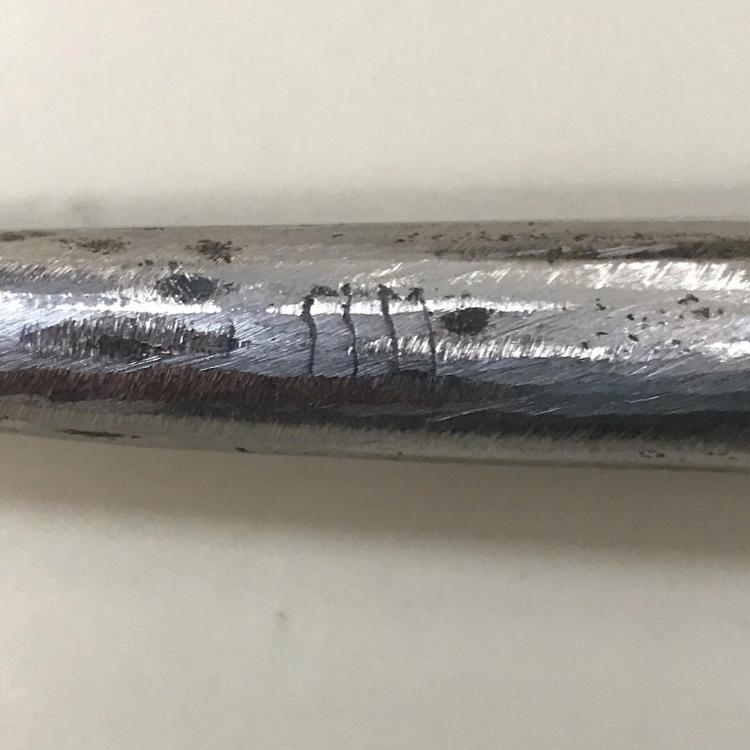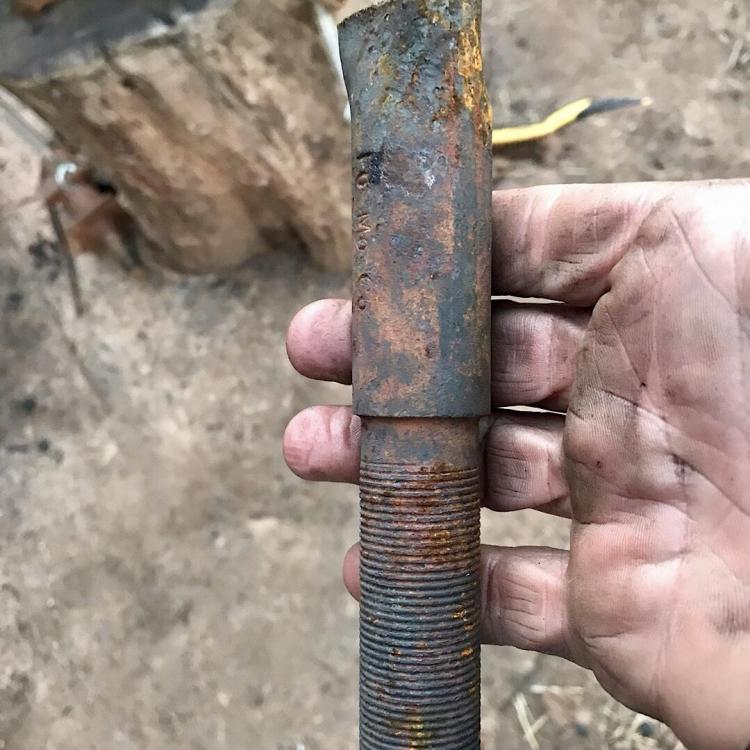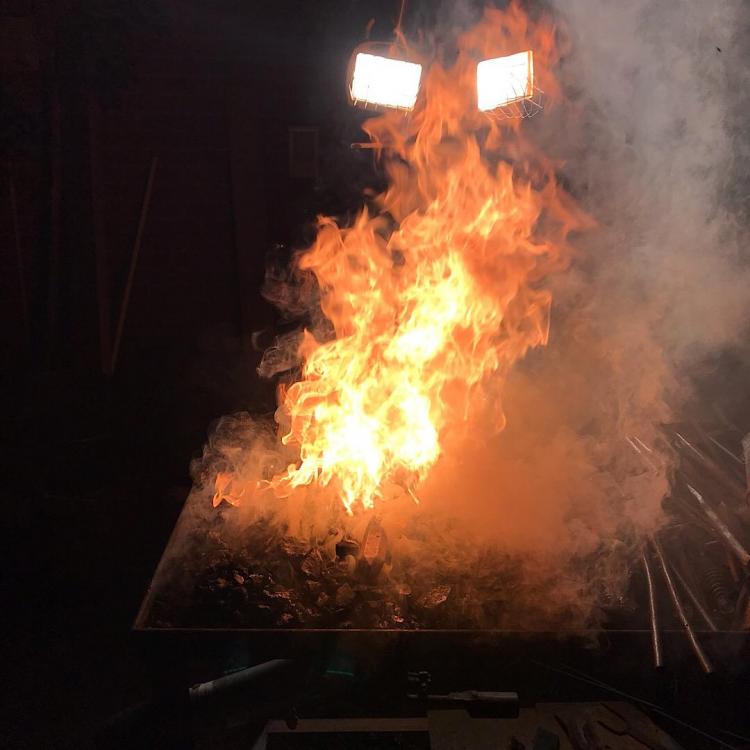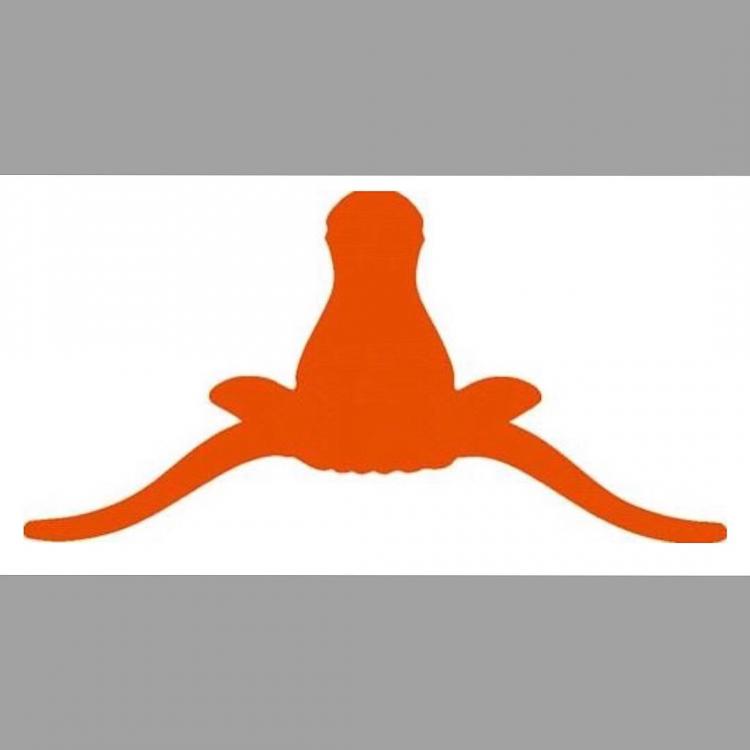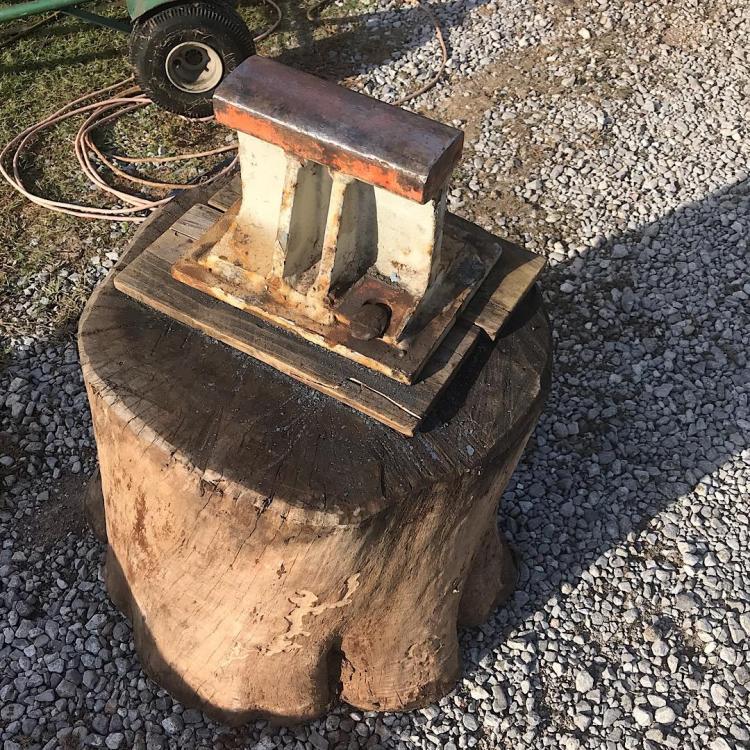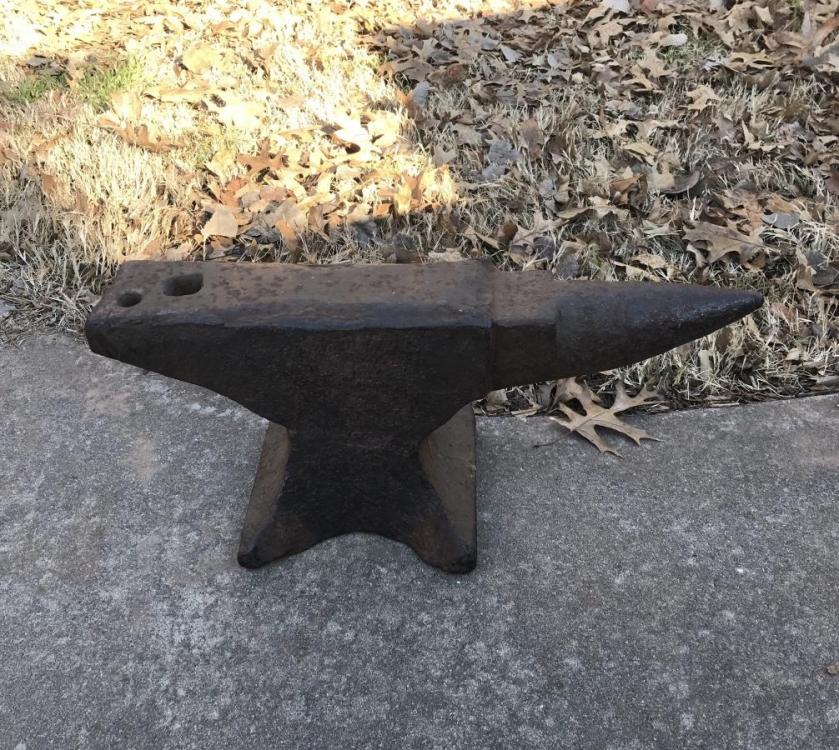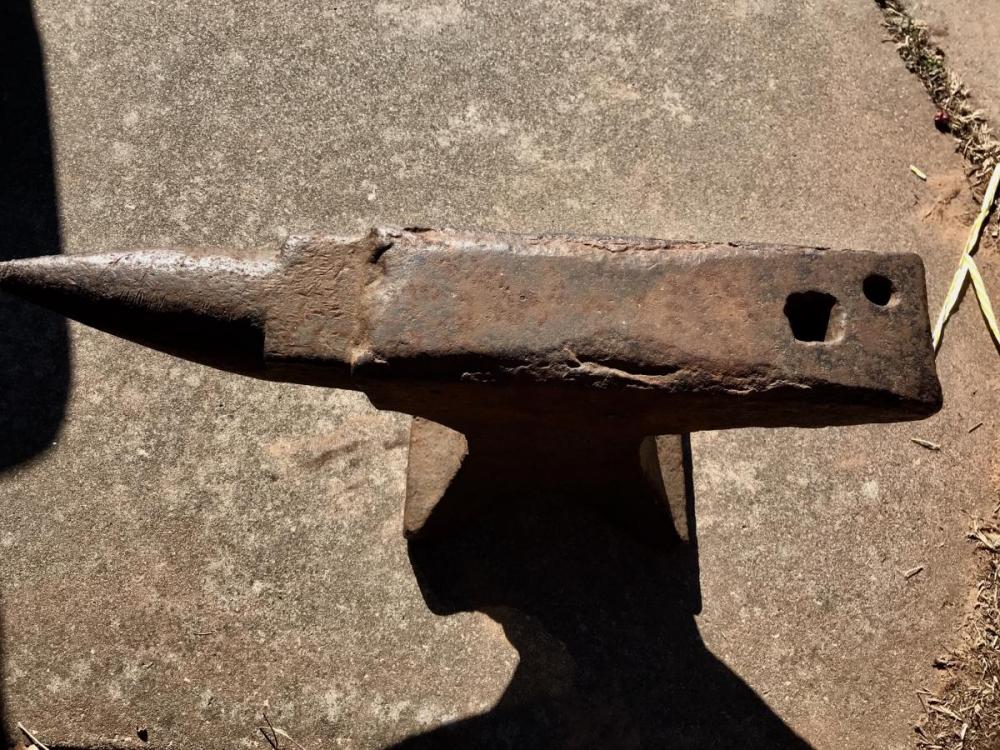-
Posts
970 -
Joined
-
Last visited
Content Type
Profiles
Forums
Articles
Gallery
Downloads
Events
Everything posted by Donal Harris
-
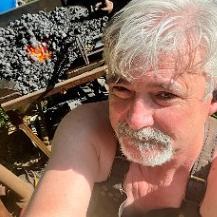
Tie Rod Ends and Threads in Scrap in General
Donal Harris replied to Donal Harris's topic in Slitters, Punches, Drifts, etc
Thanks. I was concerned it might be like a small ding in a windshield. Just a speck one day and then a few months later the crack shoots all the way across the glass. It won’t see much hard work. It’s intended use is to make rivet heading and bucking tools. Once it had done that I will disrupt it and make progressively larger heading and bucking tools. After all that, reforge it into something like an eye punch. -
The fist picture is of a piece of tie rod end and the second is pretty much the same, just thicker. The first I know nothing about it, it was just in a stack of tie rod ends at the scrap yard. The second is still mystery steel except it is Ford mystery steel. Should I have ground the threads of prior to forging. I thought they would forge out, but they didn’t, as you can see from the shark gill-like lines on the first piece. If it is just on the surface, will I have to worry about failure where the lines are? The first I forged into a ball punch and the second a hot cut Hardy tool. I heat treated both in motor oil. Tempered the hot cut to blue and the ball punch to straw.
-

Knife makers in whom you look up to or strive to mimic
Donal Harris replied to Johnnyreb338's topic in Knife Making
The results were tru works of art. There will never be another. It was a wonderus thing two craftsman at the top of their disciplines producing something together that was better than either work would have been on its own. -
-

Knife makers in whom you look up to or strive to mimic
Donal Harris replied to Johnnyreb338's topic in Knife Making
Chuck Burrows was listed above, but I thought he was a leather worker and not a bladesmith. Arguably the best that ever was at recreating frontier sheaths, belts, holsters and other related items. His work looked correct for the period and had a used but well cared for appearance. I thought from what I had read on bladeforums.com a long, long time ago that he just did that and not knives. He collaborated with Ken Beatty and other bladesmiths. Gib Guignard mentioned by Stormcrow above with Burrows was another. All three have passed as near as I can tell. I should have found the money back then. -

What Tools Can I Make From Mild Steel?
Donal Harris replied to Chelonian's topic in Tools, general discussion
Massachusetts must have steel fabrication or welding shops of some sort. The really large ones will likely not be worth your time. They all seem very fond of saying “Nope. Can’t because of liability.” The smaller ones are more apt to be willing to let you rummage around their scrap barrels. Scrap steel is sold by the ton, meaning the little you will be carrying off will not be worth a lot to them. As for HR vs CR, that depends on what the shop usually manufactures. If the item needs to be smooth after painting or powder coating, the scrap is apt to be CR. Utility trailers are mainly HR, as are truck beds. When I want to buy new, I buy it from a company in Chickasha, Oklahoma that manufactures steel buildings. There is another steel building manufacturing company in OKC that I used when I needed a plate for my forge. Their drops are often pretty large. They basically gave me the plate for free and just charged me to cut a hole in it. If you want new blade steel, that would probably be a guy called the New Jersey Steel Baron. His prices seem reasonable and others here have recommended him. Medium and high carbon stock that isn’t flat bar, I haven’t found anyone yet, but like you, I am still practicing. Sucker rod, axels, and various automotive front end scrap is easy to come by and practically free. Burning something I didn’t pay more than a few cents for is much less painful than burning some super super steel. TL;DR: You just have to do as the others have said, go to places and ask. There are still a surprisingly large number of people who still don’t realize their are people still blacksmithing. I have yet to find anyone who had been rude when I spoke with them about their scrap. -

Let’s see some fire pokers
Donal Harris replied to Jasent's topic in Blacksmithing, General Discussion
-

Not treating a cedar handle
Donal Harris replied to Hunter Copelin's topic in Finish and Polish for Knives
Dad kept them cleared off of our place, but that is where we got all of our Christmas trees as well. We would drive around the section lines until Dad found the one he wanted, then we would climb through the fence and cut down the tree. Sometime after I was grown and gone, Dad began digging them up instead of cutting them down. When Christmas was over he would plant them in the yard. There weren’t a lot of mixed hardwoods. In back there was and still is about 40 acres of all but impenetrable blackjack oak. It is very likely just as it was before Oklahoma became a state. -
It could be just a “small sample size” thing, but most of the really cool blacksmithing pins seem to be from Russian websites. Has anyone else noticed this? They use an algorithm to drive the pins you see. If you click on a particular type of pin often, you will quickly begin seeing pins of that type more often than other types of pins. So it could be as simple as that. If the pins are those of Russian blacksmiths, there are an awful lot of amazingly gifted blacksmiths in Russia. I really wish I could read the language without Google Translate.
-
I think perhaps it would be more not wanting their work to be so easily compared to yours. I know my one attempt at it before seeing your thread was terrible. My kids’ artwork we would hang on the fridge would probably have been better. That runs through my mind the few times I have posted a photo of things I have forged. One problem I have run into is my penmanship is bad. How do I overcome that? Just transfer a printed image onto the metal? Edited to add: I am interested in how you do wire inlays. I’ve never done it, but would like to see how your method compares to others. Edited yet again to add: Crap. I forgot you explained how to overcome hand scribbles in an earlier post.
-

Question about HT with a pipe
Donal Harris replied to HEAP of JEEP's topic in Heat Treating Knives, Blades etc
No. Actually a real book would be preferable. I am not opposed to online, but real beats virtual for everything but searching a long article using keywords. -

Question about HT with a pipe
Donal Harris replied to HEAP of JEEP's topic in Heat Treating Knives, Blades etc
Are there any videos or articles on this? I’ve searched but I can’t find what I want because of all the videos and articles about heat treating of pipes. -

Scrounging for blacksmiths 101
Donal Harris replied to Glenn's topic in Blacksmithing, General Discussion
I second that PPE suggestion. The piece I want is almost always on the other side of 12 inches of mud. Learn to walk in 12 inches of mud without falling. It is harder than you might think. Also bring gloves. Everything you touch will be covered in mud, grease, and other questionable appearing gunk If they have a dog, make friends with it if possible. If not possible, find a way to make it possible or find another yard. The owner of the yard I go to now that Nemo’s in Purcell is closed has some sort cow dog. She came out to meet me when I first stopped by. I stopped and talked with her a bit before going over to the yard owner. He was pretty friendly toward me after that. On the previous two visits I had made to the place, I was invisible to him and everyone else working there. -
Looks amazing.
-
That was my thought as well. The stand looks amazing, but I would have been afraid of damaging my guitar. Even just wrapping it with twine or just leather shoe laces should work and not look out of place.
-
Did anyone ever post pics of their tries at this? I believe I will give making a bracelet for my daughter another shot. When I do I will post it here. It was just a flattened length of copper ground wire. I put all four of her cats’ names on it in runes. I didn’t have a clue what I was doing. I took nail sets, small chisels, and punches and reshaped the ends using a file and an angle grinder. Somewhat similar to yours, but just different enough to make them fairly useless. It was just a couple of months ago. I wish I had gone into this section and read your posts before I wasted all my time trying to work everything out on my own. Thanks for posting this. I can see now why I failed. I can’t wait to give it another go. Loki, Missy, Grey, and Rooh are their names by the way.
-
It looks a bit like Jello and makes me think of my grandmother’s Formica table and kitchen countertops for some reason. It needs nickel silver bolsters I think. I like the layered micarta and wood scales better.
-
Cool thread. I have been wanting to try making micarta for a long time but never knew how to even begin. And in G rated terms, can you say what the naughty bit is?
-

Not treating a cedar handle
Donal Harris replied to Hunter Copelin's topic in Finish and Polish for Knives
Those trees are horrible. Not so bad when large You can prune them up and they will make serviceable shade trees, but unless kept under control they spread like mad and will outcompete other trees. They also burn way too easily when small. When I was a kid they weren’t nearly the problem they are now. You would see cows on farms. People commonly did controlled burns every few years. Now the cows are mostly gone and the land sits idle. Much of it sold to developers a decade or more ago, the land within the Greater OKC Metro area anyway. With the land idle and controlled burns rarer now, there is nothing to keep them in check. I don’t make knives, but considered taking a couple of logs from many of those downed by the storms this past Spring and cutting them up on my bandsaw to use as scales for bottle openers and such. After seeing how yours turned out, I wish I had. Beautiful wood. I would be interested in learning how yours holds up over time. I almost forgot to mention the worst part about these “weeds”. If you have allergies they will make you want to leave the State when they are releasing pollen. -

Mouse Hole Anvil Opinions?
Donal Harris replied to Donal Harris's topic in Anvils, Swage Blocks, and Mandrels
The true cost of buying the first one would be hard to calculate. Oklahoma doesn’t require alimony, but they do child support. Plus unlike many men, I really would miss my wife if she were gone. :-) i will track what I spend. I expect it will be very close unless I add the cost of the fuel I would have spent driving to Arkansas to pick it up. One benefit of doing the repair is the experience. Having succeeded or failed with an anvil no one cares about, I will feel a little more confident attempting repairs to my Dad’s anvil. He got it from his maternal grandfather who was a working blacksmith in Graham, Oklahoma. It is in very bad shape. Much of the plate is gone from the plate. The only flat spot on it is the table. The Hardy hole area is still there, but the Pritchel part of the heel was broken off long before I was born. If Dad agrees, I will probably find a professional to do the skilled work and I will just do the cleanup. -

Mouse Hole Anvil Opinions?
Donal Harris replied to Donal Harris's topic in Anvils, Swage Blocks, and Mandrels
I know nothing of the other people or how they went about welding the edges. My son-in-law, on the other hand is a known for me, as will be the process he follows. As for selling it when a perfect anvil presents itself, no. I want a larger one as a primary anvil, but will keep this one because I can easily transport it. But if I were to sell after repairing it, I wouldn’t let it go dirt cheap. As long as we follow the proper steps, the anvil should be almost as good as when new. Thanks for the info. One of the two different anvils the SCABA is considering selling has turning cams. I have one of their swage blocks and like it a lot. Assuming the anvils are also priced well, I will likely buy one of the 75 lb models to use in my garage. it does have making on the side facing you when the horn is to your right, but it is almost all gone now. I will try a pencil rubbing or maybe chalk dust to see if I can get it a little more legible for a photo. There is still enough left the I can make out part of Armitage, what appears to be an image of a mouse followed by the word HOLE. At the bottom I can see the 0 and 3 pretty well, but the third part of the weight number I can’t. It is either an 8 or 14. If an 8 the anvil weighs 92 lbs and if 14 it weighs 98, if I am calculating the English system correctly. I can’t actually weigh it because we are one of the few homes in the USA without a set of scales in the bathroom. I got it mounted today. I didn’t forge anything. All I did was make a hair thing for my wife from 4 gauge copper ground wire. I will try to make a steak turner tomorrow evening. It was very loud until I got it chained down to the stump. Now it is too quiet, but perhaps that was just because I was striking copper and not steel. -

Stump adaptation for anvil substitute.
Donal Harris replied to Strike's topic in Anvils, Swage Blocks, and Mandrels
Never knew those were called C-girders. We call them channel iron here in Oklahoma. They are used to make utility trailers and truck beds. This is what I used as an anvil from the time I started about a year and a half ago till tomorrow when I will mount the anvil I purchased a few days ago to the stump in the photo. It looks like a piece of railroad track, but isn’t. The recycling yard here in Purcell where I picked it up said it was part of a bridge being torn down. They had a metal bin full of them. I only had to pay scrap steel price for it. Meaning it cost me just $10 or so. I believe the actual scrap price for it would really have been about $5, but I wasn’t in the mood to quibble over $5 when I knew I would likely want to come back again, because Nemo let me walk around the yard. The larger places I tried in OKC would not. That chunk of whatever it is really works fine for the piddling around I do. The only real problem I had with it was it had no horn or Hardy and Pritchel holes. When I needed a horn I either used a trailer axle, spindle on the end of the axel, or which ever size of random bits of drill pipe I have scavenged. For Hardy tools my plan was to just mount them in a stump. Those are available free at the City of Purcell’s recycling center. When one of the City’s work crews removes a tree, they dump any sizable sections to the side at the center for anyone to pick up and take home. I was just about to try forging the first stump tool when I found the Mousehole I bought. I had chopped the pointy end off of a bale spike and bent it 90 degrees to make up for the bridge piece not having a horn, but hadn’t actually finished carving a hole in a stump to drive it down into. I may or may not do that at some future time. The bale spike wasn’t easy to bend. It is a little over two inches thick at the point where I chopped it off. Had I to do over again I would probably have made the bend BEFORE cutting it to length. I think the bend may have been easier. If nothing else I would have had more material to hold onto. TL;DR: Necessity is the Mother of Invention. You don’t need an actual anvil to do this. Just continue to improvise as you have done. -

Mouse Hole Anvil Opinions?
Donal Harris replied to Donal Harris's topic in Anvils, Swage Blocks, and Mandrels
Well that one fell through. I made the mistake of telling She Who Must Be Obeyed that I was going to Arkansas to pick up an anvil. Since I prefer to not cook my own food, wash and iron my clothes, and certain other things, I obeyed. The anvil I actually ended up with is much more beat up than that one, but being 92lbs is probably better for me now anyway. I sometimes need to load up for demos. Not to show off my awesome smithing skills. I do it primarily because it lets me forge all day without worrying about the noise, and to show people that, yes people still do this AND it doesn’t cost nearly as much to start as you think. I think it may be a farrier’s anvil, because the waist is narrower and the heel is thinner than they are on most other Mouseholes I have seen. The face still has most of the plate left and is reasonably flat. Less than 1/16th of an inch light visible under a straightedge. A half inch ball bearing bounces 9 inches when dropped on any place the face is left. Someone in the distant plast welded the edges. Not a good job but it has not hurt anything as far as I can tell. Since it is a rather common anvil and not one I spent a lot of money on, $2.60/lb, I think I should be able to repair it for less than I could buy a comparable Mousehole in perfect condition, especially here in Oklahoma where almost any decent anvil appears to be selling in the $4.50 - $6.00 per pound range. There is plenty of info here on how to do it. My son-in-law is a welder, that coupled with the instructions should make it possible. -

What do you think of my slitter?
Donal Harris replied to Xavier F-C's topic in Slitters, Punches, Drifts, etc
I take it from it being said the handles break a lot, your hands or wrist bones would be breaking a lot if you used a punch without a handle or tongs designed to hold them? -

What do you think of my slitter?
Donal Harris replied to Xavier F-C's topic in Slitters, Punches, Drifts, etc
So if you don’t wedge them, do you make the handle taper from thin to thick as it gets closer to the tool? Much like you see with pickaxes or tomahawks?

